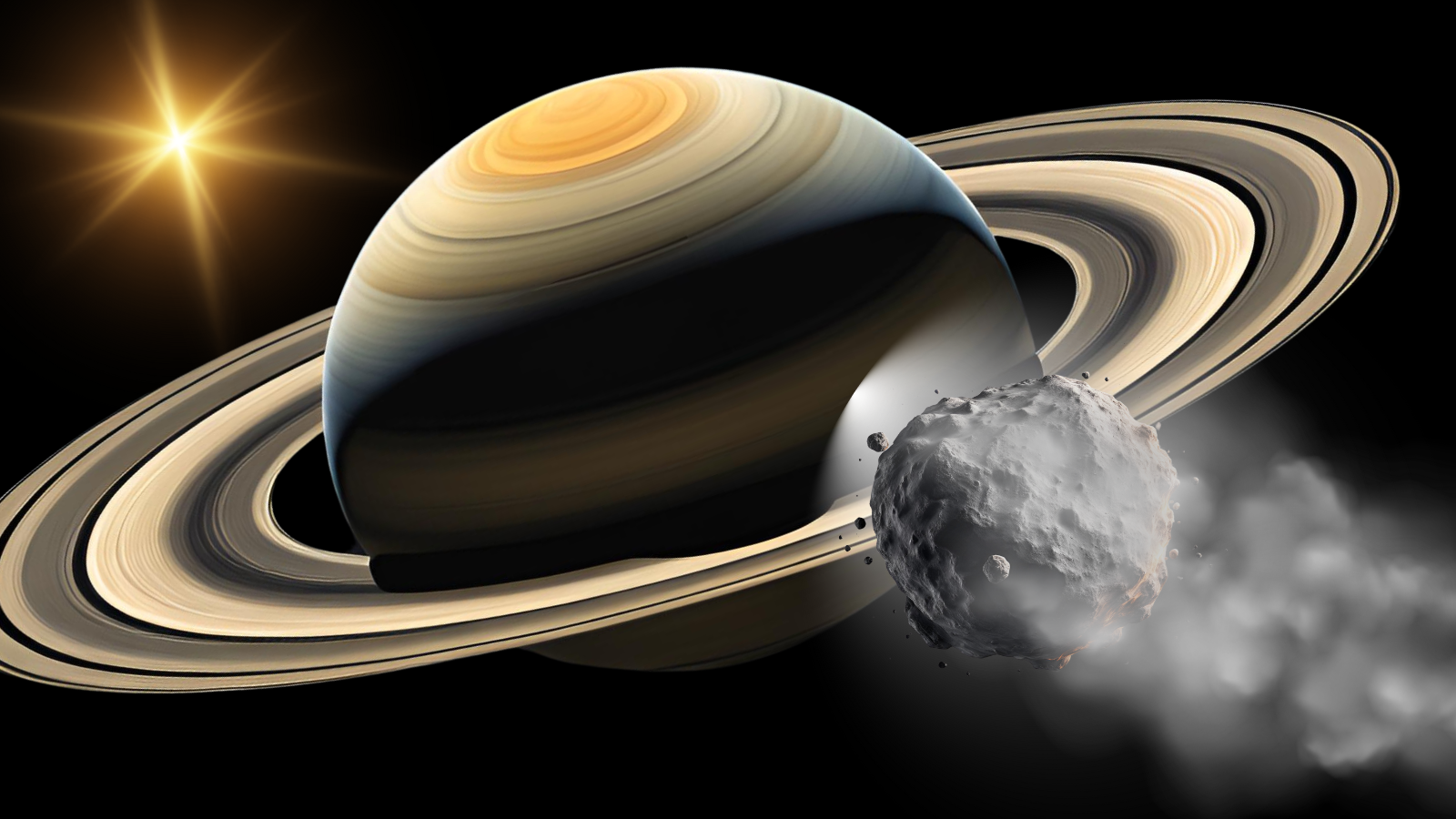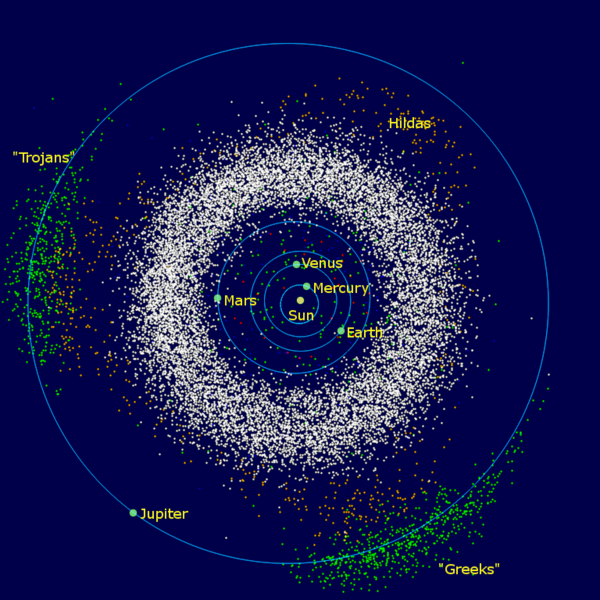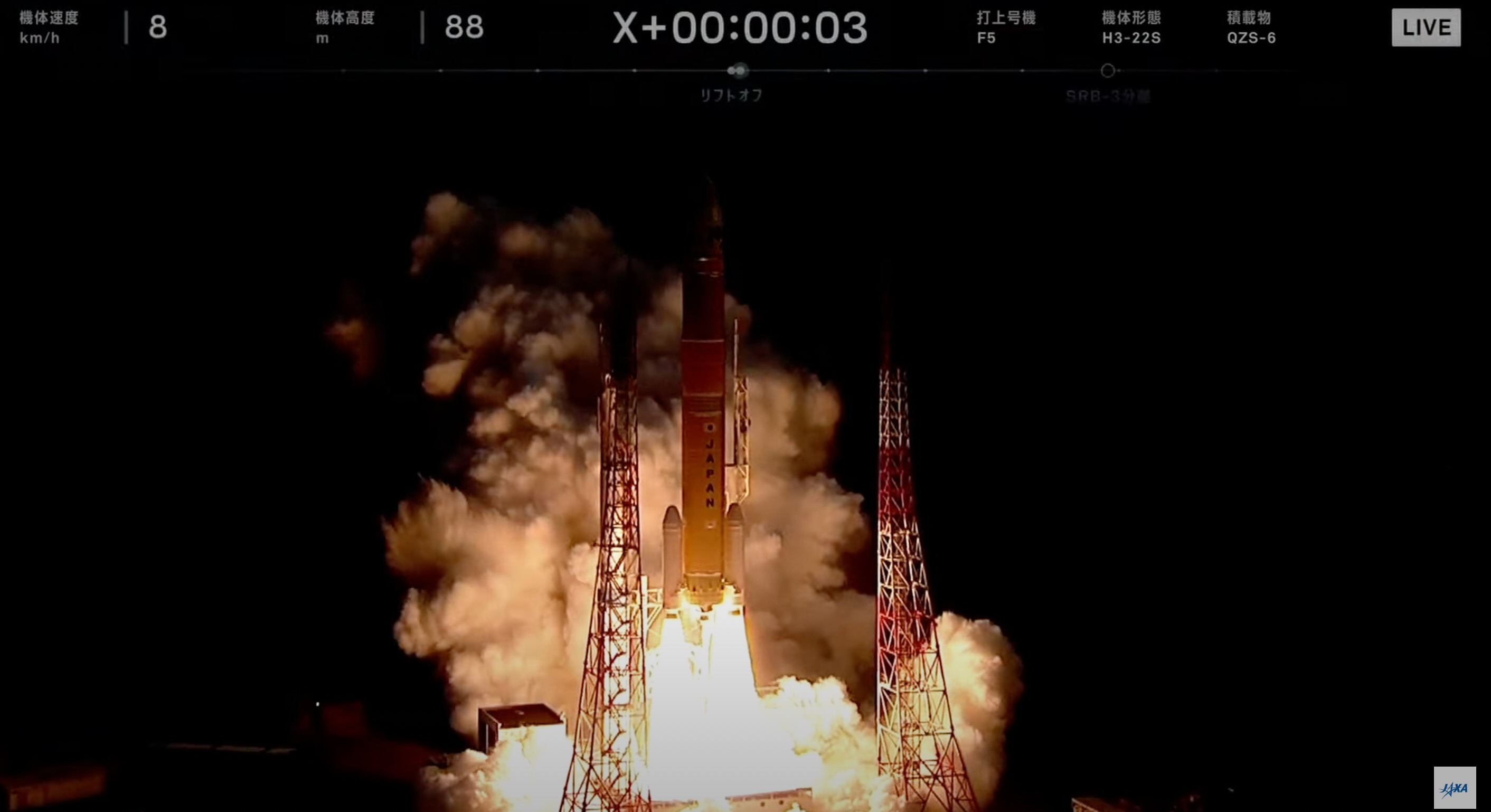Saturn gets its 1st confirmed Trojan asteroid — but it might be stolen
"The Trojan asteroid was in the process of gravitationally 'bouncing' between the giant planets when it got snagged by Saturn."

Saturn has finally joined its fellow solar system giant planets as the parent of trailing asteroids called "Trojans." But the gas giant, mostly known for its spectacular rings, may have cheated a little to fit in with its contemporaries, Jupiter, Neptune and Uranus.
Saturn seems to have snatched its first known Trojan asteroid, designated 2019 UO14, a few thousand years ago as the space rock was "bouncing" around the solar system. Additionally, because the orbit of this Saturnian Trojan is unstable, Saturn seems to be a terrible parent that will lose this cosmic hanger-on in around 1,000 years.
That means astronomers will have to get to work, hunting for more asteroids that share an orbit with the sixth planet from the sun. That is, if Saturn wants to hang with its fellow gas giants and ice giants. In fact, even smaller terrestrial planets like Earth and Mars have Trojans.
"We think it is about 9 miles (15 kilometers) across, though its composition is unknown, it probably originated from the Kuiper Belt beyond Neptune," discovery team member Paul Wiegert, an astronomer at the University of Western Ontario, told Space.com. "The Trojan asteroid was in the process of gravitationally 'bouncing' between the giant planets when it got snagged by Saturn."
Related: Collisions could increase chance of 'God of Destruction' asteroid Apophis hitting Earth
Wiegert explained that Trojan asteroids are space rocks that share a planet's orbit, either remaining ahead of or behind the planet. These asteroids also usually sit at an average separation from the planet of about 60 degrees, as seen from the sun's vantage point.
"With the discovery of 2019 UO14, all the gas giant planets are now known to have Trojan asteroids," he said. "Only Mercury and Venus still don't have known Trojans."
Breaking space news, the latest updates on rocket launches, skywatching events and more!
Saturn lags Jupiter in terms of Trojans
The solar system's "king of the Trojans" is, without a doubt, its largest planet: Jupiter. The fifth planet from the sun has around 10,000 known Trojan asteroids, enough to be divided into two families. One is ahead of the gas giant planet in its orbit (the Greek camp) and the other is trailing Jupiter (the Trojan camp).
These Jovian Trojans are considered so scientifically important that the NASA mission Lucy will visit the Greek camp in August 2027 when it performs a flyby of the asteroid Eurybates and its moonlet, Queta. The spacecraft will then visit three more Greek camp asteroids before its mission concludes in 2033.
Jupiter's gravitational influence is responsible for the amount of Trojans in its orbit, and this influence actually interferes with Saturn's ability to build its own Trojan family, or at least to hang on to one.
"There are some reasons to expect Saturn Trojans to be less common than for the other gas giants," Wiegert said. "Primarily, Jupiter acts to destabilize Saturnian Trojans and shorten their lifetimes considerably, shoving them out of the Saturn Trojan state and back into the background population of small bodies in the solar system."
Jupiter's first discovered Trojan, 588 Achilles, was identified in 1906 by German astronomer Max Wolf. In other words, there has been quite the delay in detecting Saturn's first confirmed Trojan. Astronomers saw the first hints of 2019 UO14 in 2019, but are only now confirming that it shares the gas giant's orbit.
Wiegert added that the Trojans of Saturn are not more difficult to detect, in principle, meaning astronomers have been puzzled as to why they haven't been discovered earlier. Answering this conundrum didn't come down to a clever new approach or technique, but rather a quality astronomers need to have in spades: patience.
"We didn't really do anything different in terms of the approach used in this case; it was really just a matter of carefully watching the lists of nightly small body observations looking for likely candidates," he said. "Kudos go to Andrew Walker of Australia, one of our co-authors, for noticing it first."
Wiegert and colleagues will now attempt to determine more of the characteristics of 2019 UO14, which should help identify from where it originated. Initial indications point to this Saturnian Trojan coming from the Kuiper belt, a ring of icy bodies at the edge of the solar system, but there are irregularities the team must iron out before this is confirmed.
"2019 UO14 is similar to some of the Trojans of Uranus and Neptune, but we
don't know enough about them yet to say if they are identical," Wiegert said. "Currently, it seems not."
"We'll absolutely be looking for more Trojans around Saturn now that we've got our first one," Wiegert said. "We expect there to be more, but probably not a lot more. I'd guess, and it is little more than an educated guess, that we might find 10 more Saturn Trojans bigger than 0.62 miles (1 km) — but we'll have to wait and see.
"The excitement level is up, and we'll be looking carefully to spot the next one!"
The team's research is available to view as a preprint on the paper repository arXiv.

Robert Lea is a science journalist in the U.K. whose articles have been published in Physics World, New Scientist, Astronomy Magazine, All About Space, Newsweek and ZME Science. He also writes about science communication for Elsevier and the European Journal of Physics. Rob holds a bachelor of science degree in physics and astronomy from the U.K.’s Open University. Follow him on Twitter @sciencef1rst.

